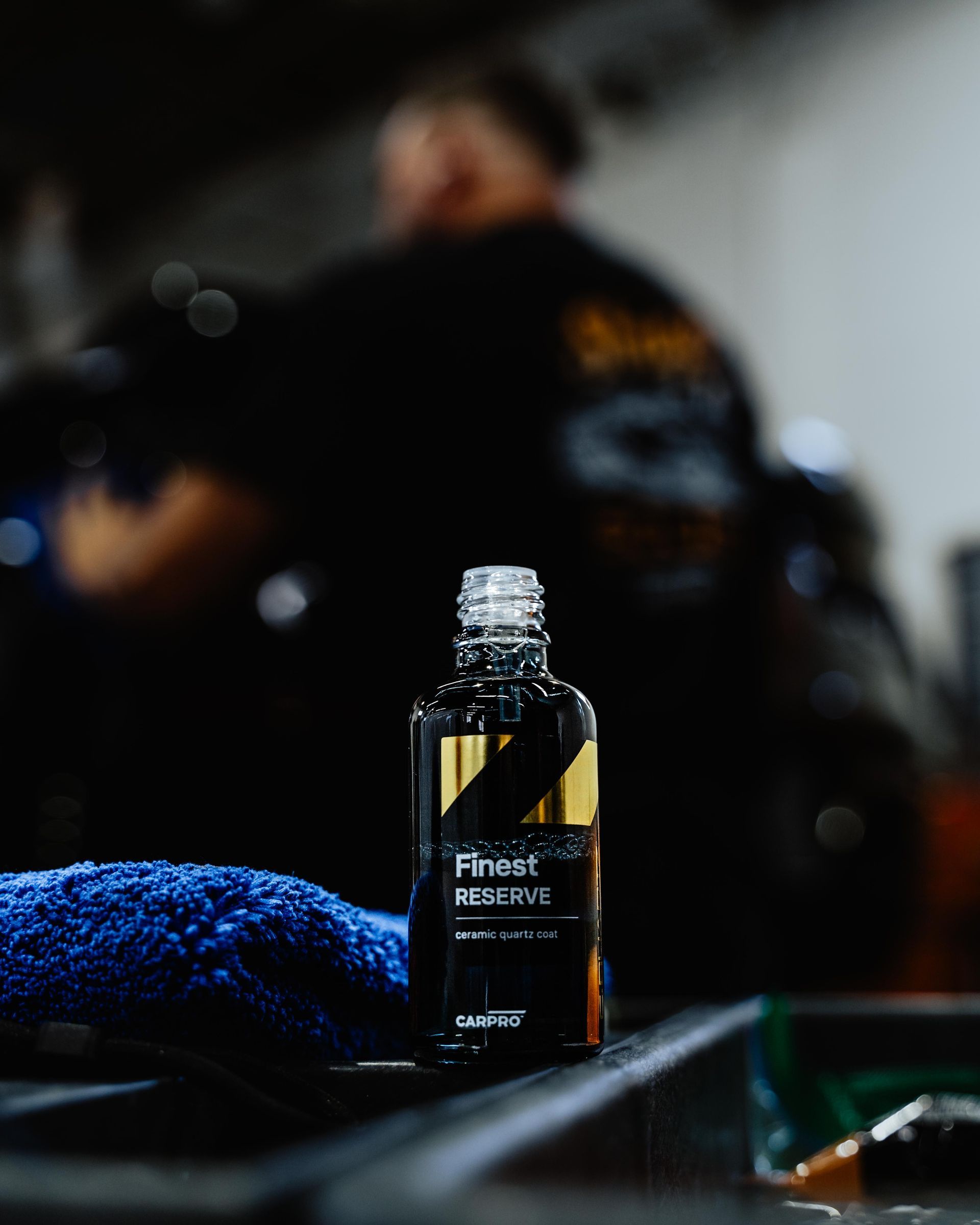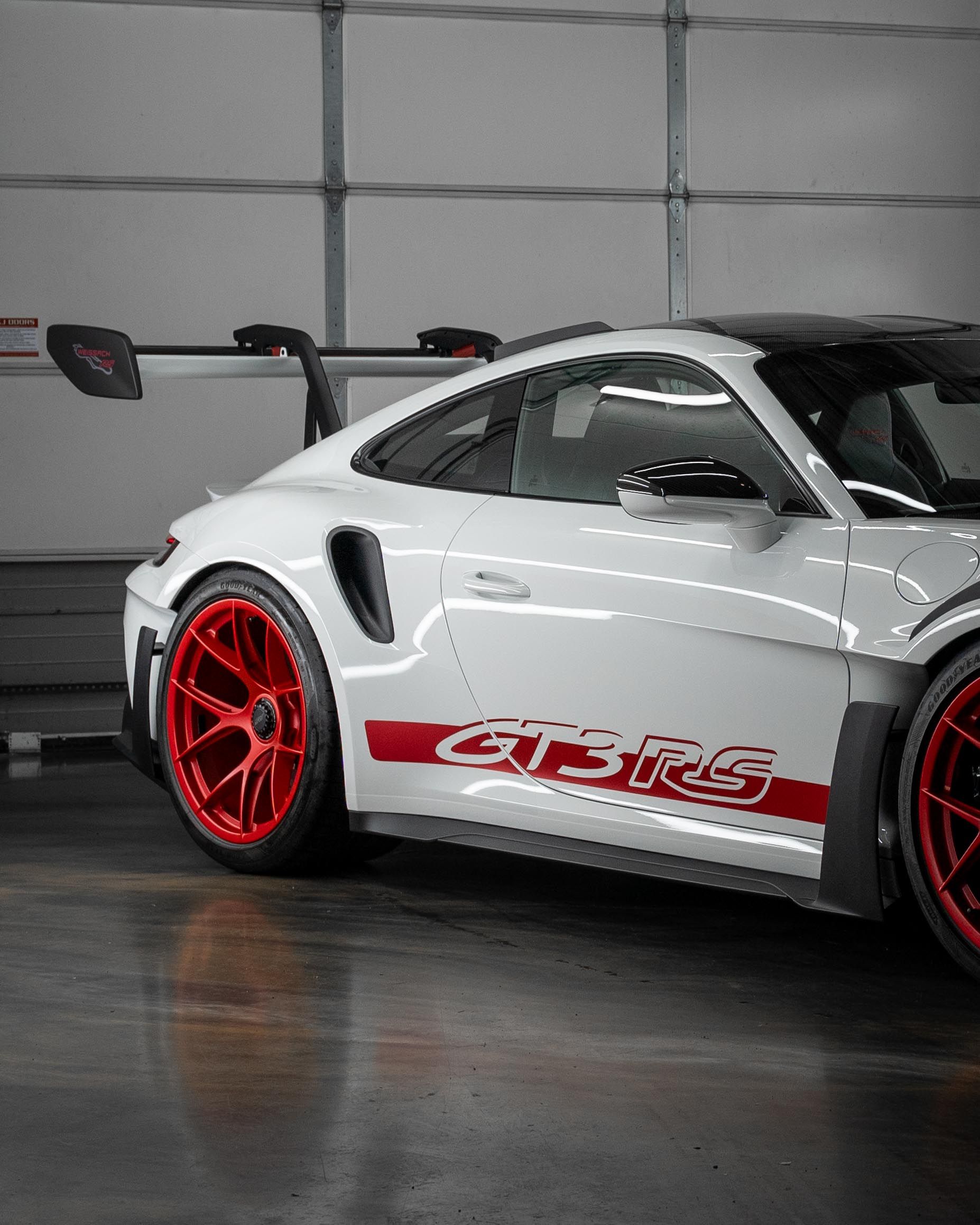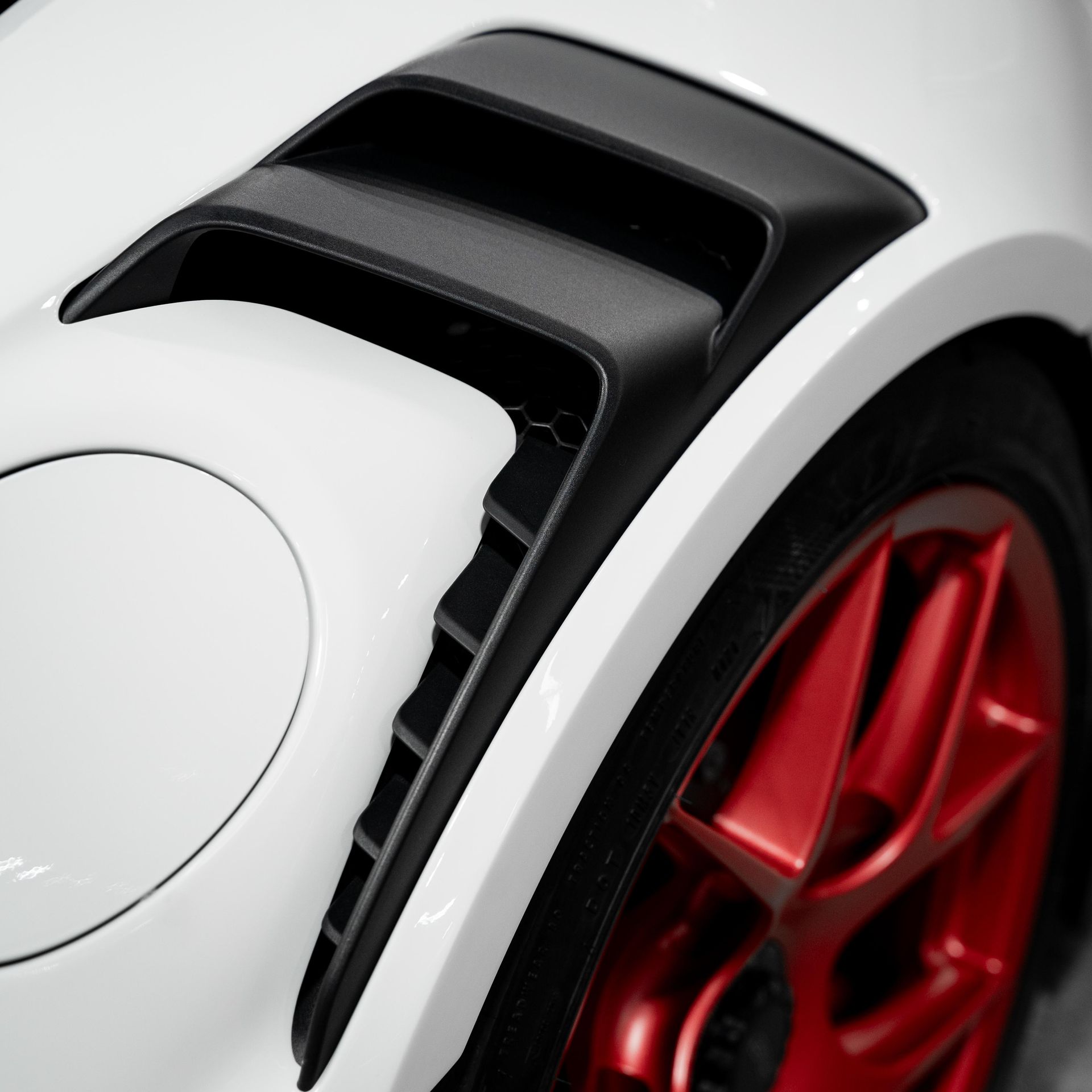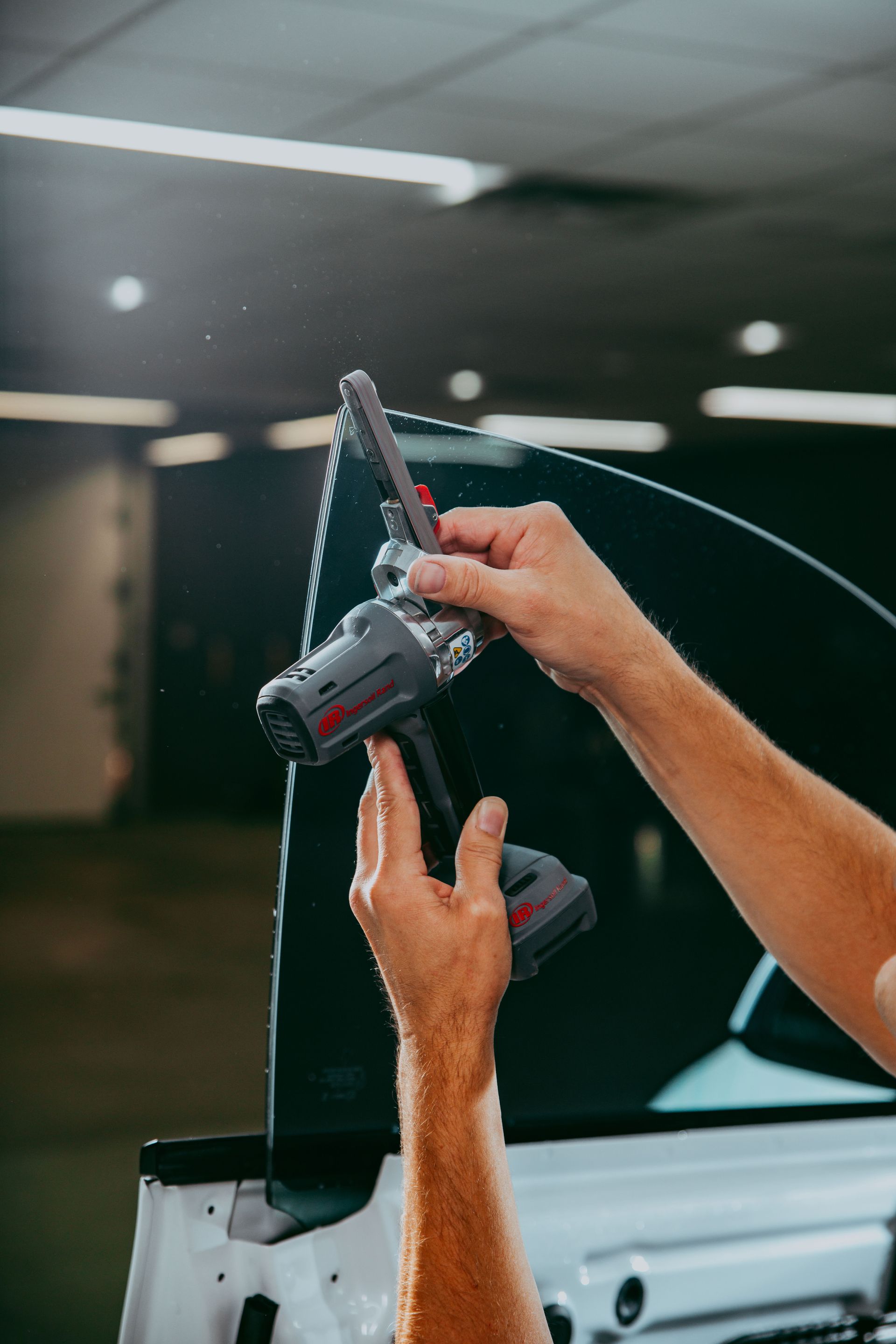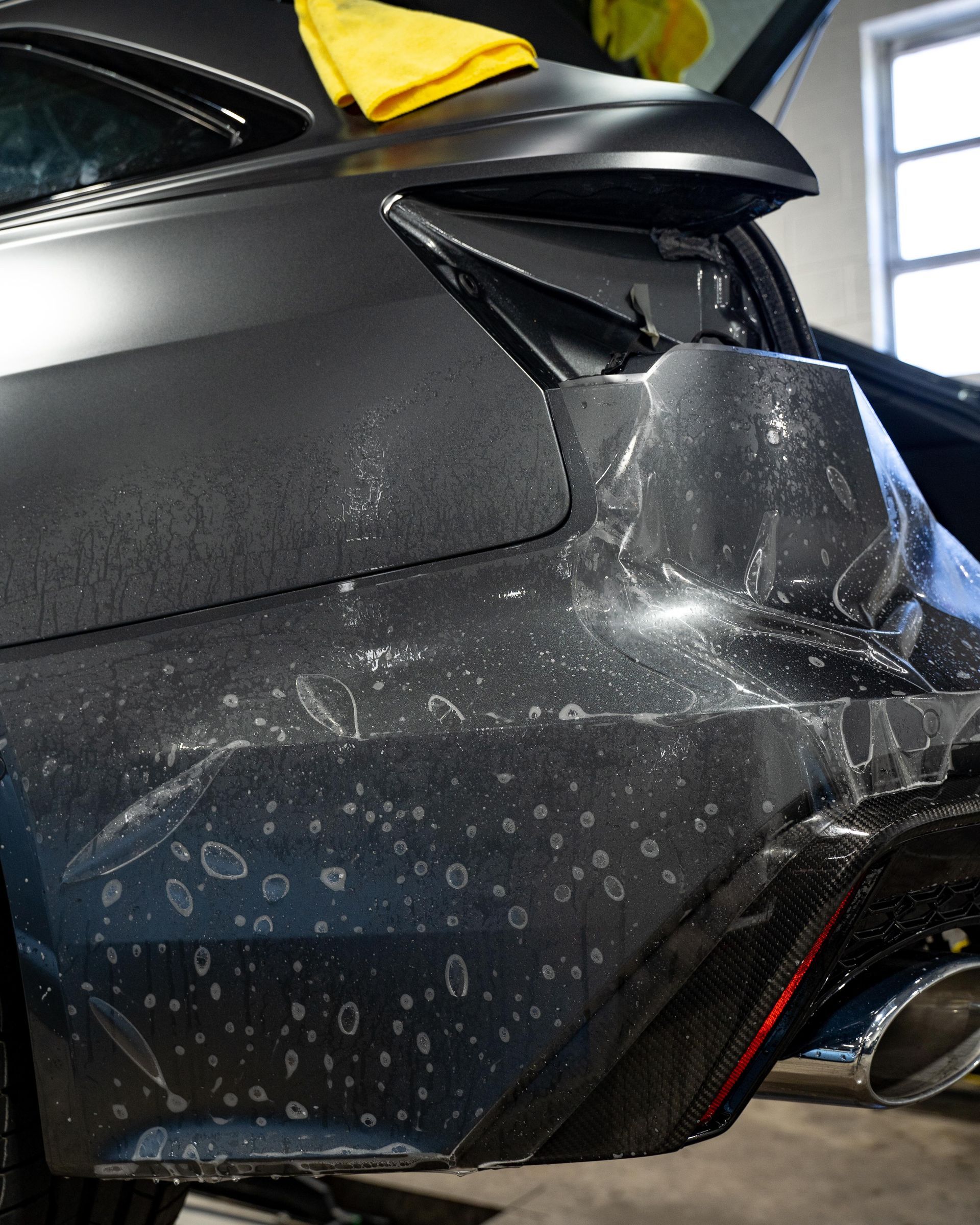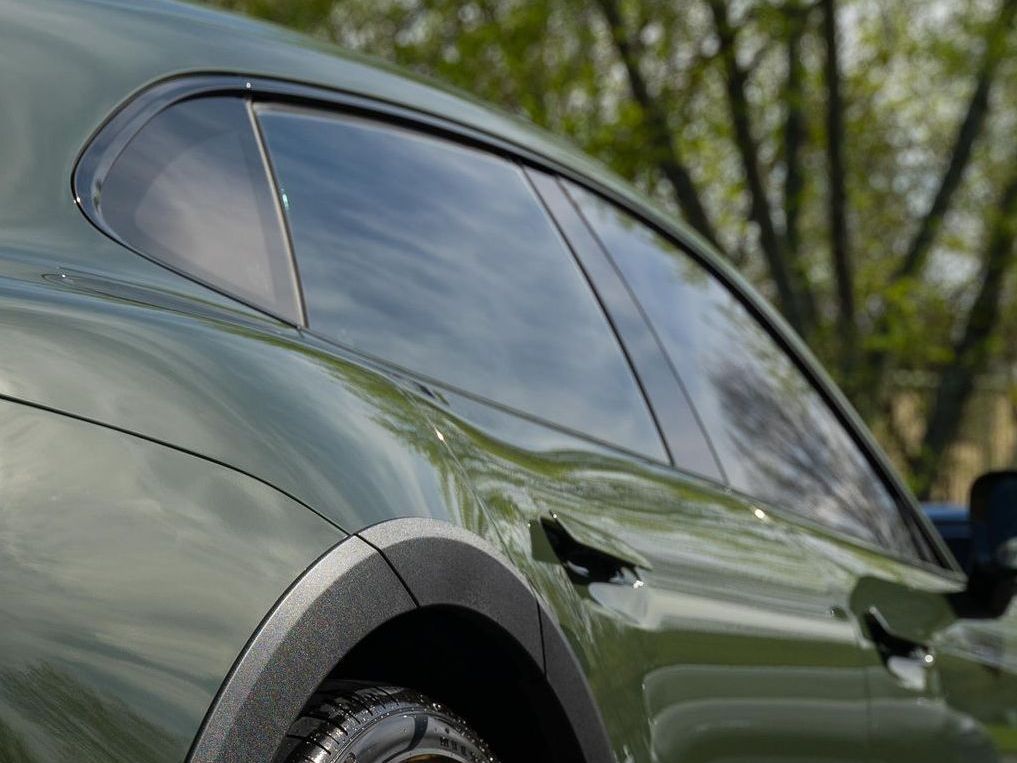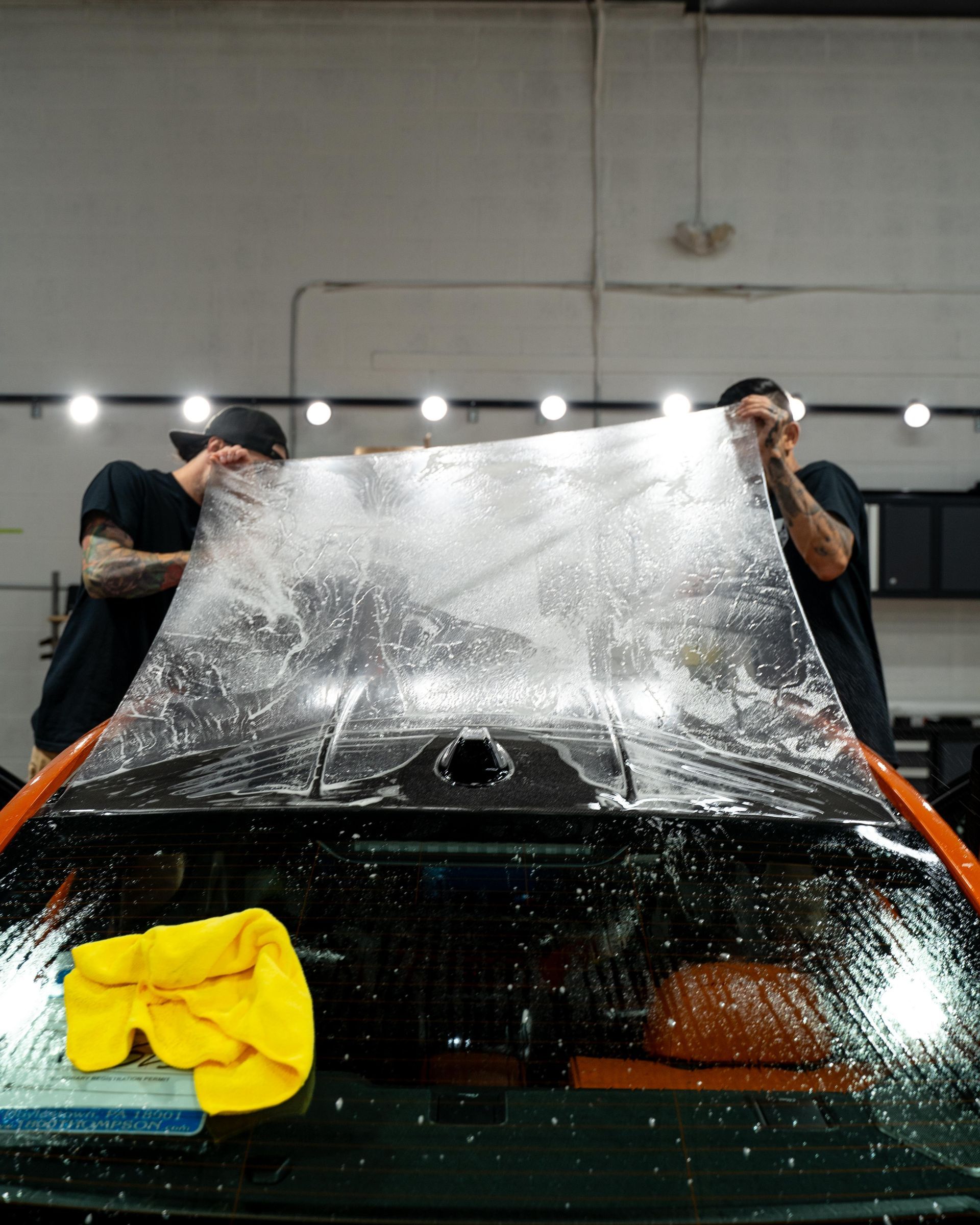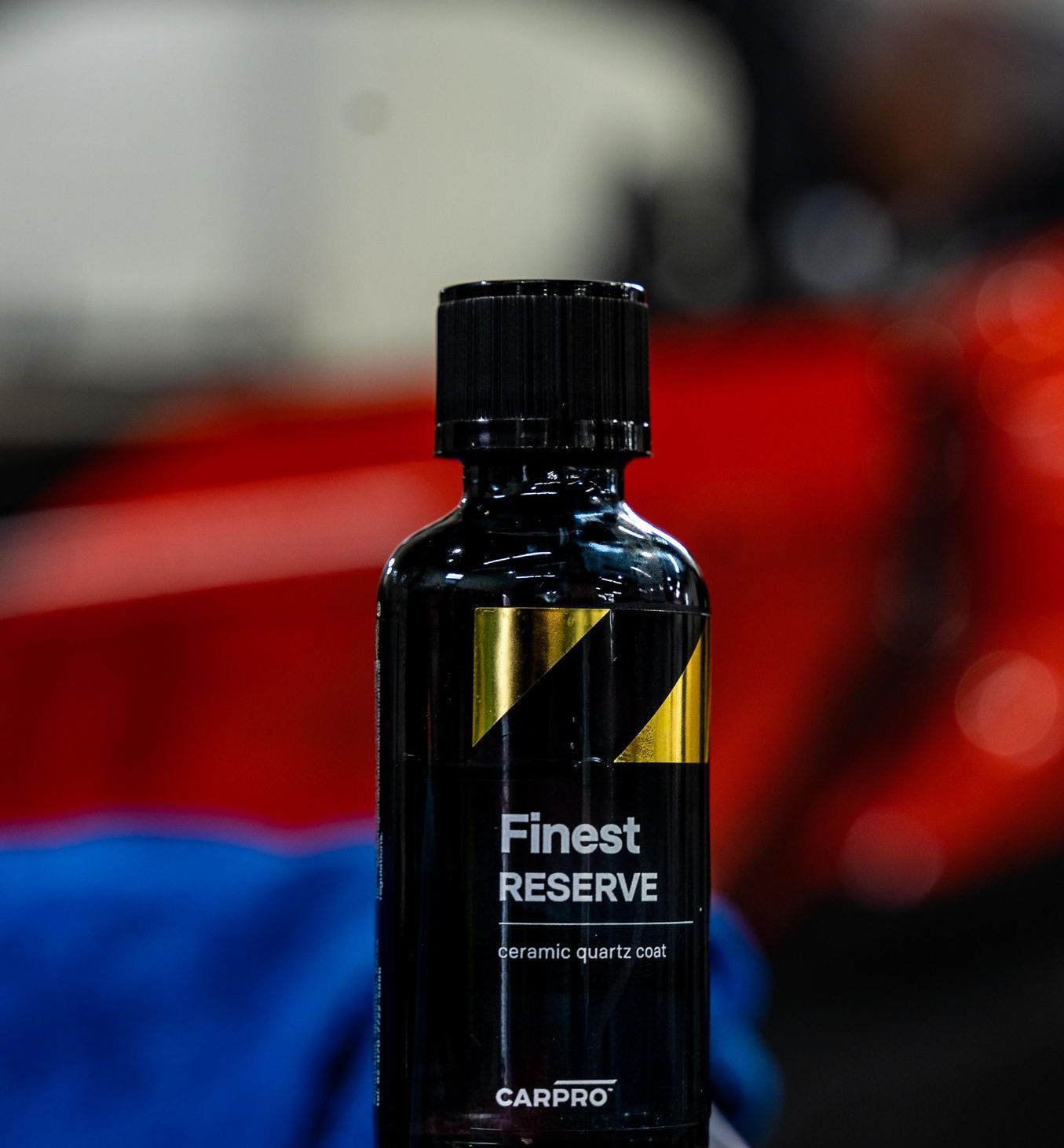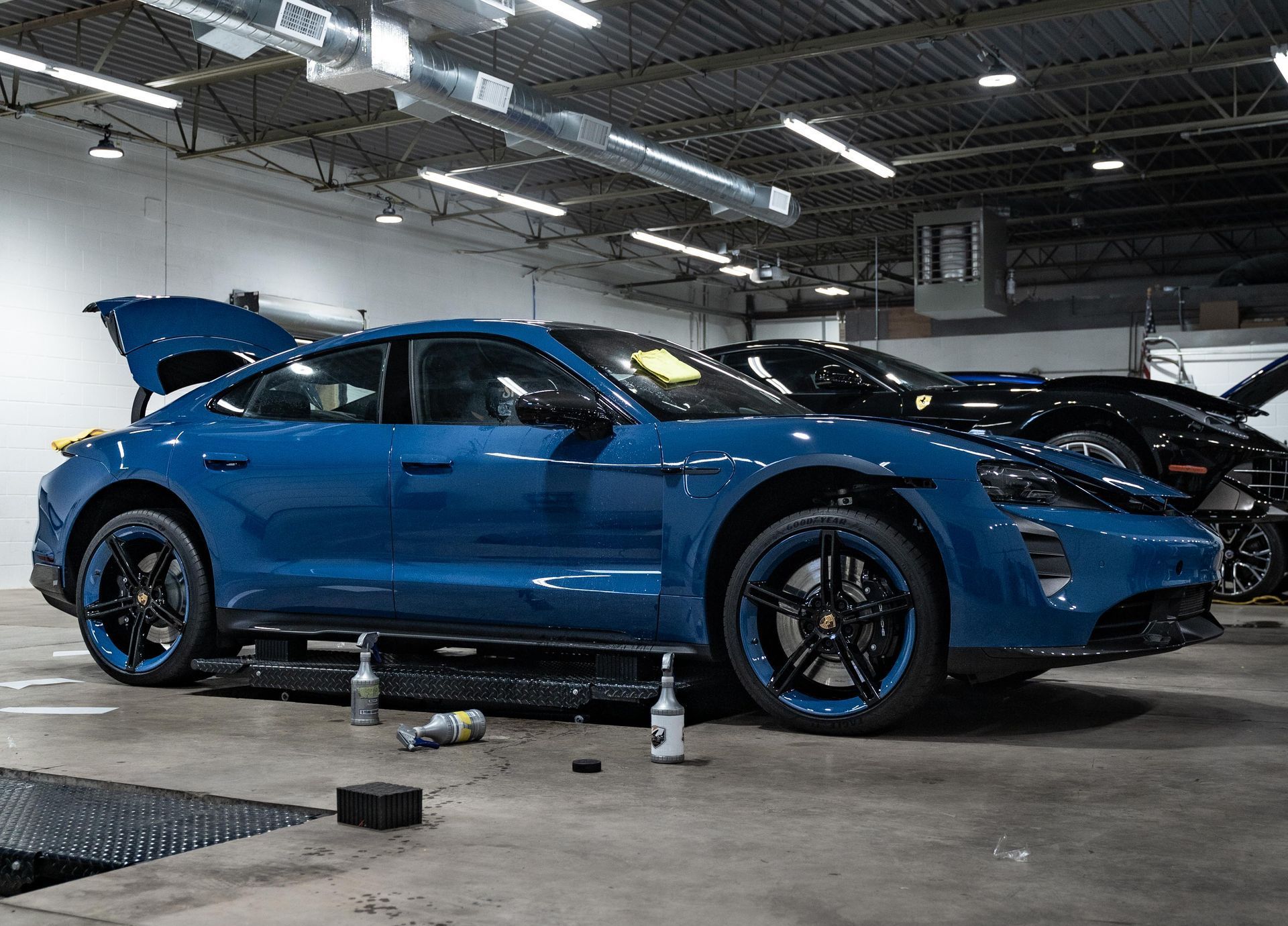What is Ceramic Coating? How It Protects Your Vehicle and Enhances Durability
CALL (833) 263-6273
When it comes to protecting your car, it’s not just about looking good; it’s about keeping your investment safe and shiny. Today, many car owners are turning to ceramic coatings as a way to go beyond traditional waxing, and for good reason. These products promise a tougher shield against the elements, from harmful UV rays to the everyday dirt that can dull your vehicle's exterior. If you've ever wondered what ceramic coating is and why it's causing such a buzz among auto enthusiasts, you’re in the right place. In this article, we’ll explore ceramic coating in detail—how it works, its benefits, and why it may be the perfect fit for your vehicle's care routine. Let’s dive in!
Ceramic coating is a liquid polymer applied to the exterior surfaces of vehicles that chemically bonds with the factory paint, providing a durable protective layer against environmental contaminants. It enhances your vehicle's shine, offers resistance to chemicals and UV rays, and makes cleaning easier by repelling water and dirt, ultimately preserving the paintwork and extending its lifespan.
What is Ceramic Coating?
At its core, ceramic coating is a liquid polymer that you apply onto your vehicle's exterior surfaces. This isn’t just any paint; it actually chemically bonds with the factory paint, forming a robust layer that acts as a first line of defense against a variety of environmental contaminants like dirt, bird droppings, and tree sap. Imagine having an invisible shield protecting your car's paint!
Chemical Composition
The secret to its protective prowess lies in its chemical makeup. Most ceramic coatings are primarily composed of silicon dioxide (SiO2), which cures to create a hard, clear shell over your vehicle’s surface. Some formulations also include titanium dioxide (TiO₂) for added durability and improved hydrophobic effects. This means when it rains, you’ll see water rolling off rather than pooling on your car—a feature many find useful in maintaining that polished look. This unique chemical structure not only enhances the shine of your vehicle but also significantly boosts its resilience against UV rays and harsh chemicals typically found in cleaning products.
Application Complexity
However, achieving the perfect application of ceramic coating requires some finesse. It’s essential to prepare the surface properly before applying the coating; this often involves using a clay bar treatment followed by paint correction to remove any imperfections. These preparatory steps are crucial because if the surface isn’t prepared adequately, the coating may not adhere as intended. Without these careful measures, the effectiveness of the ceramic coating can be compromised, leading to dissatisfaction with its performance. Therefore, whether you're considering professional installation or attempting a DIY job, understanding these preparation methods can dramatically affect the durability and protection it offers.
Investing time in proper application means enjoying long-lasting benefits—some coatings even last from 1 to 5 years—giving you less frequent reasons to reapply while maintaining that glossy allure of your vehicle's appearance. As we consider how these applications enhance not just aesthetics but also protection, it’s important to explore the tangible advantages they bring to vehicle care.
Key Benefits of Ceramic Coating
- Extreme Durability: The standout feature of ceramic coating is its incredible durability. When applied correctly, this protective layer can endure harsh environmental elements for one to five years, far exceeding the lifespan of traditional waxes, which might last only a few months. Imagine the difference: with ceramic coatings, you not only shield your car from everyday wear and tear but also enhance its long-term aesthetic appeal.
- Hydrophobic Properties: Another awe-inspiring quality of ceramic coatings is their hydrophobic properties. These coatings create a water-repelling surface that causes rain and spills to bead up and roll off effortlessly. This means when you take your vehicle for a drive in the rain or after a quick wash, dirt finds it significantly harder to cling onto your paintwork. With significantly reduced cleaning times—20 minutes versus 45 minutes for traditional wax—you can spend more time enjoying your vehicle rather than scrubbing it down. The efficient design of hydrophobic surfaces transforms mundane maintenance into an almost enjoyable task.
- UV Protection: Beyond just beauty, ceramic coatings offer robust UV protection, safeguarding your vehicle’s paint from harmful sun rays. Over time, exposure to ultraviolet light can lead to fading and oxidation, diminishing your car's visual appeal and overall value. A ceramic coating acts as a shield, effectively extending the life of your vehicle's finish by five to ten years on average. Every moment you spend in the sun becomes less dangerous for your paint job, highlighting the necessity of protecting your investment.
- Ease of Cleaning: Finally, one of the often-overlooked benefits is that vehicles treated with ceramic coatings are much easier to clean compared to traditional finishes. Because dirt, grime, and fluids cannot bond easily with the smooth surface created by ceramic coatings, washing requires less effort and results in a cleaner overall appearance. This translates not only into saved time but also often fewer cleaning supplies needed—making it both economical and efficient thinking for vehicle maintenance aficionados.
Understanding these significant benefits exposes why so many car enthusiasts are eager to explore practical applications and techniques for maximizing their automotive experience.
How to Apply Ceramic Coating
Getting the most out of ceramic coating relies heavily on its application process. The foundation of a successful ceramic coating application begins with surface preparation. Start by thoroughly cleaning the vehicle using a pH-neutral car shampoo, as this will remove any dirt, oil, or soap residues that may hinder the coating's effectiveness. It’s essential to eliminate all contaminants such as tar, sap, or bird droppings. As you wash, use soft microfiber towels to ensure that you're not damaging the surface. The goal here is to create a pristine canvas upon which the coating can set. Once you've tackled that initial cleaning step, it's time to focus on decontamination.
- Surface Preparation: The next phase is decontamination. For this, a clay bar works wonders. A simple pass over the paint surface will help eradicate those embedded particles that washing alone might miss. This part can be transformative; it's like peeling away layers of imperfections to reveal a smooth finish underneath. After using the clay bar, if you still see imperfections, don’t fret—this is where paint correction comes into play. Paint correction is critical in ensuring that the ceramic coating adheres properly and performs optimally.
- Paint Correction: To perform paint correction, utilize a dual-action polisher with an appropriate polishing pad and polish compound suited for your paint type. This step not only removes imperfections but also ensures that your vehicle has a flawless surface for the coating to bond with effectively. Remember, just as a painter wouldn’t start applying color before priming a wall, you're setting the stage for the ceramic coat here. Take your time—this step is vital for maximizing the lifespan and performance of your coating, allowing it to deliver on its promises. With your surface ready for action, let’s turn our attention to the exciting part: applying the actual coating.
- Application: Now it's time to apply the ceramic coating itself. Use a foam applicator pad for precise control and even application. Work in small overlapping sections to avoid missing any areas, making sure you’re applying enough product for thorough coverage without going overboard. After application, allow the coating to cure according to the manufacturer’s instructions—generally at least 24 hours—before exposing it to water or harsh conditions. After curing, take a clean microfiber cloth and gently buff off any excess residue that hasn't bonded yet. Many DIY enthusiasts recommend working in a temperature-controlled garage during this entire process. This helps achieve optimal curing conditions and minimizes potential issues with humidity or temperature fluctuations affecting the final result.
Following these steps with diligence will ensure that your ceramic coating delivers lasting protection while enhancing the visual appeal of your vehicle. Like many home projects where attention to detail pays off immensely, investing time in this process will ultimately yield spectacular results! Now that we've explored how to effectively apply ceramic coatings, it's important to understand what keeps them performing at their best over time.
Durability and Maintenance
While ceramic coatings are celebrated for their impressive resilience, they require care to ensure they deliver on their promises. Think of it this way: just as a well-oiled machine runs smoothly, so does a properly maintained ceramic coating. Proper upkeep not only preserves the aesthetic appeal of your vehicle but also maximizes the functional benefits that these advanced materials offer.
- Regular Washing: It's recommended to wash your vehicle every two weeks with a gentle, pH-neutral shampoo. This practice is crucial; the right shampoo helps maintain the integrity of the coating without stripping it away. Avoid harsh chemicals or abrasive cleaners, as these can dull the finish over time. Additionally, steer clear of automatic car washes with scrubbing brushes that can scratch and wear down the surface. Instead, opt for a soft wash mitt or microfiber towel. This gentle touch is akin to how you'd treat a delicate fabric, ensuring your sleek finish remains untouched while effectively removing grime. However, washing alone isn't sufficient for maintaining maximum protection.
- Use of Ceramic Boosters: To truly keep your ceramic coating thriving, consider adding a ceramic booster to your routine every few months. These specialized sprays are designed to rejuvenate the existing layers and reinforce their hydrophobic properties—those fabulous qualities that make water bead off effortlessly. Applying a booster can be likened to reapplying sunscreen after swimming; it enhances your vehicle's defenses against the elements while preserving its vibrant shine. Not only does this step extend the life of the coating, but it also keeps your car looking showroom-ready at all times. Another vital aspect of maintenance involves a routine checkup.
- Visual Inspection: A simple visual inspection can go a long way in identifying potential issues early on. Make it a habit to walk around your vehicle regularly and look for any signs of wear—dull patches or areas where water fails to bead can signal that it's time for more intensive maintenance or possibly reapplication. This attention to detail is similar to listening for unusual sounds in an engine; catching problems early prevents minor issues from escalating into major repairs. Consider this: data from ceramic coating manufacturers indicates that diligent maintenance can extend the life of your coating by up to 50%. By investing just a little bit of time in proper care, you’re not just protecting your vehicle’s appearance; you’re safeguarding its value over time.
Understanding these maintenance practices lays the groundwork for comparing various protective solutions available in today’s market.
Ceramic Coating vs Traditional Wax
When it comes to longevity, ceramic coatings truly shine. These coatings can last anywhere from two to five years, depending on the product used and how well you maintain your vehicle. In a world where time is precious, the reduced frequency of maintenance can be a significant advantage. Traditional wax needs to be reapplied every few months—typically losing effectiveness within just two to three months—making it a less viable option for long-term protection. Imagine doing a meticulous job of waxing your car only to see that beautiful shine dull within weeks; it's frustrating but common with waxes.
Protective Qualities
Now let’s talk about protective qualities. This aspect of ceramic coatings is what many users rave about. With heightened resistance to UV rays, acid rain, and harmful chemicals, ceramic coatings act like a shield against environmental harm. Think of them as armor for your vehicle's paint. Wax, while it does give a nice gloss, primarily offers superficial shine without durable protection from harsh elements. It’s a bit like putting on sunglasses versus wearing a full helmet during a storm—only one offers true protection! In terms of protecting your investment in your vehicle's finish over time, that kind of resilience cannot be overstated.
Cost Analysis
On the surface, the initial costs of ceramic coatings can seem daunting, ranging from $500 to $2,000 for professional application. This includes preparation steps such as paint correction to ensure a smooth finish before the application. It's easy to balk at this price compared to traditional wax, which generally costs around $30 to $50 per session. However, if you look beyond the upfront costs and assess the long-term benefits and durability offered by ceramic coatings, they can become quite cost-effective over time.
In fact, if you're diligent with maintenance—relying on periodic ceramic sprays—you'll find that your investment stands up better than any waxing routine could ever promise, given its frequent reapplications. Choosing between ceramic coating and traditional wax involves considering your specific needs, driving habits, and how much time you’re willing to invest into vehicle upkeep. From here, we shift our focus towards exploring the best options to suit your vehicle’s protective needs.
Choosing the Right Protection for Your Car
Making a choice regarding the protection of your car requires careful consideration of various factors. It's not merely about picking a product; it’s about understanding how that choice fits into your lifestyle and your vehicle's specific needs.
For instance, budget plays a significant role in this decision-making process. If you find yourself limited by finances, opting for wax might seem like a practical initial investment. However, while wax may be less expensive upfront, the long-term maintenance costs can add up quickly. Frequent reapplication and potential paint damage from lack of robust protection can turn what initially seemed like a cost-effective solution into an expensive chore.
As you weigh your financial options, another critical factor to consider is vehicle type. Certain cars, especially newer models with pristine factory paint jobs, stand to gain significantly from ceramic coatings. These products bond chemically with the paint surface, creating an enduring protective layer that enhances both shine and durability. On the other hand, older vehicles with imperfections may not benefit as much from such treatments, as the underlying condition of the paint can impact the effectiveness of a ceramic application.
Additionally, let's talk about usage conditions. If your car often faces harsh environments—think California sun, coastal salt air, or gritty industrial fallout—ceramic coatings become increasingly valuable. These coatings provide formidable resistance against UV rays and chemical stains compared to traditional wax. Imagine driving around knowing that heavy rain or salty seawater will just slide right off your vehicle rather than etching into the surface. That's where the ceramic advantage shines through.
Once you've assessed these fundamental aspects, it’s wise to seek further knowledge by consulting reviews and expert insights.
Consulting Reviews and Experts
Gathering experiences from others can significantly influence your decision. Check out testimonials from both professional detailers and car enthusiasts; these voices can be invaluable resources. Notably, luxury car owners show enthusiastic support for ceramic coatings due to their extraordinary protective capacity—a feature not often matched by conventional methods.
By carefully assessing your own needs alongside expert advice and user testimonials, you’ll be better positioned to make an informed decision on which protective solution best aligns with your vehicle’s requirements and your lifestyle. In summary, understanding how each factor—budget, vehicle type, and usage conditions—interconnects will empower you to choose the right protective layer for your vehicle while enriching its longevity and appearance.
Expert Ceramic Coating Solutions in West Chester, PA
If you’re after that deep, mirror-like shine that turns heads in West Chester, Menard Premium Detailing has you covered. Our ceramic coating service goes beyond surface beauty—it's long-lasting protection against the elements, road debris, and fading. Let your vehicle show off its best side every time you drive. Book your ceramic coating appointment and experience the difference that true quality makes.


